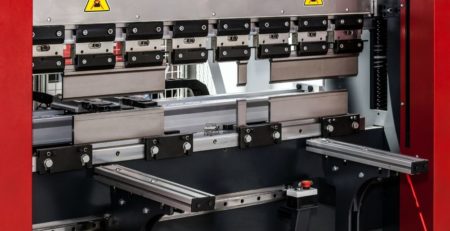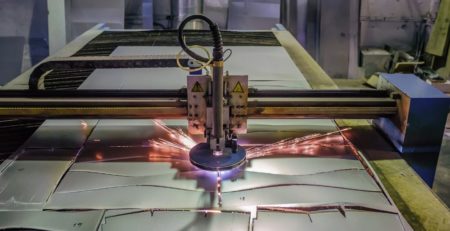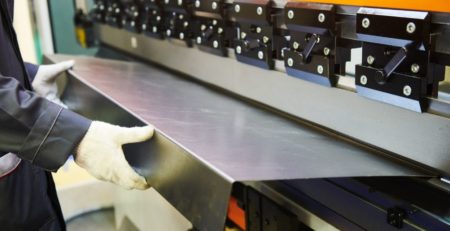Hydraulics 101: A Guide to Pressurized Fluid Systems
Hydraulics are essential aspects of engineering that involve the mechanical properties and use of liquids. This “hydraulics 101” guide to pressurized fluid systems will provide a refresher on the concepts, principles, and applications of hydraulic systems in a practical manner.
What Are Hydraulic Systems?
Hydraulic systems, also known as pressurized fluid systems, use fluids (typically oils) under pressure to generate, control, or transmit power. They can be as simple as a car jack or as complex as the system that powers an excavator’s bucket scooper. Hydraulics can also power an aircraft’s wing flaps and landing gear.
How Do Hydraulic Systems Work?
A typical hydraulic system consists of several key components: a reservoir, a pump, valves, hydraulic fluid, and actuators. Each part plays a pivotal role in the operation of the system.
The reservoir acts as a storage tank for the hydraulic fluid, which is the lifeblood of the system. Hydraulic fluid transmits power, lubricates the system, and dissipates heat.
Next in line is the pump, which creates a pressure difference in the system by pushing the hydraulic fluid from the reservoir into the system. Various types of pumps include gear pumps, piston pumps, and vane pumps. The different pumps are suited for a specific application.
Valves control the direction, pressure, and flow rate of the hydraulic fluid. They allow the system to achieve the desired motion or force at the actuators. Valves can be manually, electrically, or hydraulically operated.
Finally, actuators convert the hydraulic energy into mechanical energy to do work. Hydraulic actuators can be linear (like cylinders) or rotary (like hydraulic motors). The hydraulic fluid’s pressure acts on the actuator’s surface, creating a force that moves the actuator and the machine component it is connected to.
A hydraulic system’s mechanical function involves the continuous movement of hydraulic fluid in a closed loop from the reservoir, through the pump and valves, to the actuators, and back to the reservoir. This fluid movement under pressure results in power transmission.
Why Hydraulic Systems Work: Pascal’s Law
The effectiveness of hydraulic systems relies on Pascal’s Law, a principle in fluid mechanics stating that pressure change in a confined fluid transmits equally in all directions. This law is named after Blaise Pascal, a French physicist who formulated it in the 17th century.
In the context of a hydraulic system, a force applied to one point of the hydraulic fluid will be evenly distributed throughout the entire system. For example, if a piston pushes on the fluid in one section of the system, a corresponding force will be exerted on whatever is on the other side of the system, such as another piston. This principle allows the hydraulic system to amplify force and enable the movement of heavy loads with relatively small input forces. In essence, Pascal’s Law is the reason for the power and effectiveness of hydraulic systems.
Common Applications of Hydraulic Systems
Hydraulic systems are pervasive in our everyday lives, and their practical applications extend across various industries. Consider these examples of hydraulic powered systems:
Construction Equipment
Hydraulic systems are the powerhouse behind many pieces of heavy construction equipment, from excavators and backhoe loaders to bulldozers and cranes. For instance, the hydraulic cylinder in an excavator powers the arm movements to dig and lift heavy loads, while hydraulic motors rotate the cab. These systems provide the necessary force the machines require to operate.
Aircraft Systems
Aircraft heavily rely on hydraulic systems for several essential functions. These include operating the wing flaps, retracting and extending the landing gear, and even braking the wheels. Because hydraulic systems can generate a substantial amount of power relative to their size and weight, they are practical for aerospace applications.
Auto Repair Shops
Auto repair shops commonly use hydraulic car lifts to elevate vehicles for maintenance or repair. By applying a relatively small force on one end, a much larger force generates on the other side due to the principles of hydraulics. Then, mechanics can easily raise heavy vehicles to work on them.
Metal Fabrication Machinery
Hydraulic press brakes are common in the metal fabrication industry. These machines require a high level of force to bend metal sheets, which is made possible by hydraulic systems.
The Significance of Specialized Hydraulic System Training
Considering the complexity of hydraulic systems, specialized training for operations and maintenance is indispensable. Unlike other forms of mechanical or vehicle repair training, hydraulic system maintenance demands a specific skill set and knowledge base.
While other types of repair training might focus on the basics of machinery anatomy and common mechanical issues, hydraulic system training delves into the principles of fluid dynamics, pressure regulation, and the interplay of system components. It covers details such as the role of each element (like pumps, valves, and actuators), how they interact, and the potential points of failure within the system.
Additionally, trainees learn how to handle hydraulic fluids safely and responsibly, given the crucial role these substances play in system operations and their potential hazards if mishandled. Trainees also learn the necessary preventive maintenance measures for keeping a hydraulic system running smoothly. These may involve regularly checking for leaks, monitoring fluid levels, and ensuring all components function as they should.
Training for maintaining hydraulic systems is distinct from other types of mechanical or vehicle repair training. It equips professionals with the practical skills they need to maintain and troubleshoot these complex systems, ensuring their safe and efficient operation in various applications. Bulldozer, excavator, and crane operators, as well as auto shop managers and aircraft mechanics, must develop this skillset to perform their jobs safely and ensure machinery with hydraulic components functions safely.
Hydraulics play an essential role in simple tasks, like operating a car jack, and complex operations, like operating a crane or excavator. By harnessing the power of pressurized fluids, hydraulic systems provide a reliable and highly efficient means of generating force and controlling motion. With this guide to pressurized fluid systems, we hope you have a better understanding of how these systems work and their many practical applications in our world today.













